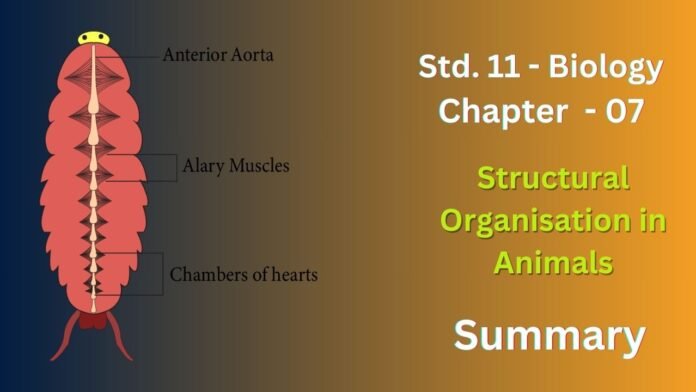Structural Organization in Animals is a fundamental concept in biology that explores how different levels of organization contribute to the overall structure and function of an animal’s body.
Key points from this chapter include:
- Cellular Level: Animals are made up of cells, the basic units of life.
- Tissue Level: Groups of similar cells with a common function form tissues, such as epithelial, connective, muscular, and nervous tissues.
- Organ Level: Multiple tissues working together perform specific functions, forming organs like the heart, lungs, liver, and kidneys.
- Organ System Level: Organs that work together to perform a broader function form organ systems, such as the circulatory system, respiratory system, digestive system, and nervous system.
- Organism Level: All the organ systems work together to form a complete organism, capable of independent existence and reproduction.
The chapter also discusses the specific types of tissues found in animals, their functions, and how they are organized into organs and organ systems. Understanding structural organization is essential for understanding the anatomy, physiology, and behavior of animals.
Exercise
1. Draw a neat diagram of digestive system of frog.
Ans :
2. Mention the function of the Ureters in frog.
Ans :
The ureters in a frog are responsible for carrying urine from the kidneys to the cloaca.
The kidneys filter waste products and excess water from the blood, producing urine. The ureters then transport this urine to the cloaca, a multi-purpose opening that serves as the exit point for digestive waste, urine, and eggs in amphibians like frogs.


